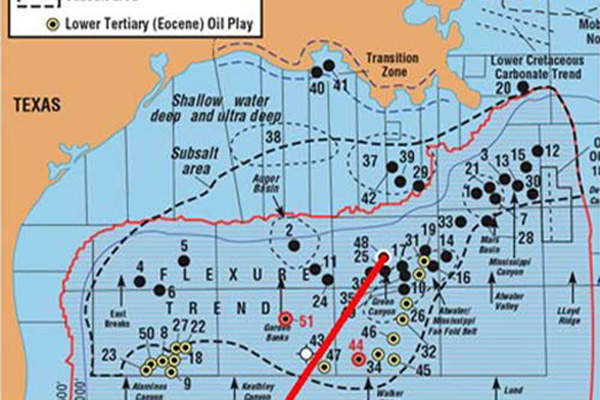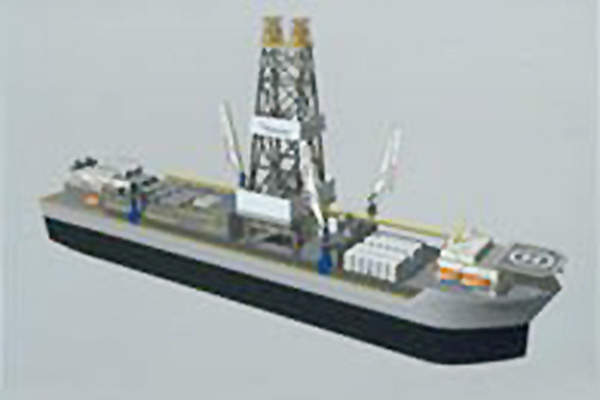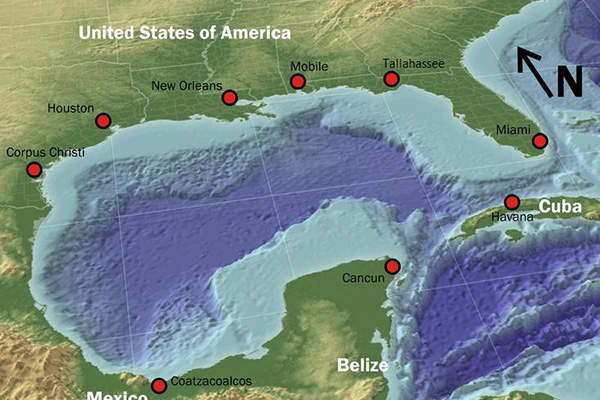Stampede oil and gas project involves the development of the Pony and Knotty Head deepwater fields located in Green Canyon Blocks 468, 511 and 512 in the Gulf of Mexico.
The fields are located at a water depth of approximately 3,500ft and 115 miles south of Fourchon, Louisiana.
The front-end engineering and design (FEED) for the project started in the second quarter of 2013 and the final investment decision (FID) was made in October 2014. The project is expected to require an investment of $6bn, and initial production from the deepwater fields is expected in 2018.
Hess holds 25% working interest in the project and will operate the field, while Union Oil Company of California, a subsidiary of Chevron, Statoil and Nexen Petroleum Offshore own 25% interest each in the project.
Discovery, geology and reserves
The field has an estimated life of 15 years and oil reserves of 635,000 million barrels of oil equivalent.
The Knotty Head and Pony fields were discovered in 2005 and 2006 respectively. The two fields were earlier conceived to be developed as separate projects by their respective operators, but Hess, the 100% owner of the Pony field, executed a joint operating agreement with Nexen Petroleum and its partners in the Knotty Head field in 2012. Following this, the two projects were merged and named Stampede, and Hess was appointed as the operator.
Oil and gas reserves at Stampede are located within the Miocene reservoirs at a depth of approximately 30,000ft. The two fields are estimated to hold combined recoverable reserves of up to 350 million barrels of oil equivalent (mboe).
Discovery and drilling activities
The Knotty Head field was discovered in December 2005 by drilling the Knotty Head No. 1 discovery well in Green Canyon block 512. Drilled to a total depth of 34,189ft using the TransOcean Discoverer Spirit drillship, the well encountered approximately 600ft of net pay oil sand. It is the deepest well drilled in the Gulf of Mexico.
The drilling of a sidetrack well 4,500ft to the south of the original wellbore was completed in March 2006. The well was drilled to a total depth of 32,986ft and encountered 400ft of net oil pay.
Pony field was discovered in July 2006 by drilling the Pony No.1 well to a total depth of 32,448ft within the Green Canyon Block 468. The well encountered 475ft of oil saturated sandstone.
Drilling of the Pony No. 1 sidetrack well approximately 2,700ft north-east of the discovery well was completed in December 2006. The well was drilled to a depth of 30,634ft and encountered 280ft of oil saturated sandstones.
The drilling of the Pony No. 2 appraisal well, located 1.5 miles north-west of the discovery well, was completed in March 2008. The well was drilled to a total depth of 32,900ft and encountered oil within the targeted sands.
In June 2008, Hess completed the drilling of the Pony No. 2 sidetrack well, located approximately 7,400ft north-west of the discovery well. Drilled to a total depth of 33,362ft, the well discovered oil.
Hess further started drilling of the Pony No. 3 appraisal well in 2010 in Green Canyon Block 469. The drilling works were, however, suspended in the second quarter of 2010.
Stampede offshore project development details
The project involves the development of six subsea production wells and four water injection wells from two subsea drill centres. Two rigs are expected to perform the drilling works and the first rig is expected to commence operations in late 2015. The wells will be tied back to a newly built tension leg platform (TLP).
The TLP will be designed for a production capacity of 80,000 barrels per day (bpd) of oil, 60,000bpd of water and 120 million standard cubic feet per day (mmscfd) of gas, and will have topsides weighing approximately 11,500t.
Contractors involved with the deepwater Gulf of Mexico project
Modec International has been chosen to provide project management, engineering, procurement and construction management for the hull and mooring systems of the TLP. The contract to perform FEED for the TLP was awarded to Wood Group Mustang in December 2013.
Halliburton developed a geomechanical Earth model for the Knotty Head No. 1 discovery well implementing its salt creep analysis service and drillworks software.






